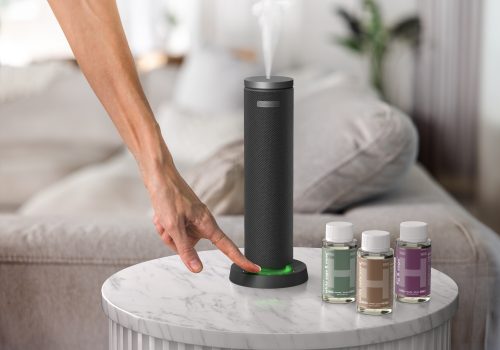Sitting Postures: Proper Positions for Back Health
You’ve probably heard it before: don’t slouch, it’s bad for your back. Poor posture affects more than just your back, though.
A long day of slouching could create tension in your shoulders and neck and tightness in your hips. Poor posture may also exacerbate existing soreness or discomfort.
Fortunately, proper sitting posture is relatively simple to learn. Although it takes practice to make it a habit, learning correct sitting posture is an important part of a healthy lifestyle.
Learn what proper sitting posture is and how to make sure you’re using it as much as possible.
Why Your Sitting Posture Is Important
If you spend a lot of time sitting at a desk or a table with a keyboard and mouse, good sitting posture is crucial to help avoid stiffness and soreness in muscles and joints.
Proper posture depends on several large postural muscle groups, including the hamstrings and back muscles, which are already under a lot of stress from daily activity. This is partly responsible for people’s aversion to good posture—it’s not easy to keep up when you’re relying on muscles that eventually get tired.
But sitting with good posture could help reduce abnormal joint wear that can occur when bones and muscles can’t move properly. By enabling better movement and reducing unnecessary strain, good posture also helps muscles work more efficiently.
It takes practice for your body to become accustomed to sitting with correct posture, but it’s worth the effort.
What Is Good Posture and How Does It Help?
Good posture does two primary things:
- Good posture keeps your spine in a neutral position.
- Good posture helps reduce tension on your neck, shoulders, and hips.
Extended periods of tension on these muscles, which are responsible for keeping us upright and balanced almost all the time, can cause pain and discomfort.
When you’re sitting with correct posture, your ears, shoulders, and hips will draw an almost straight line from your head to the floor.
What Is a Neutral Spine Position?
When your spine is in a neutral position, it has three front-to-back curves. This gives it an “S” shape, and has several health benefits:
- It helps cushion the spine.
- It provides the best balance.
- It puts the least amount of pressure on soft tissues.
- It optimizes blood flow.
Factors That Affect Sitting Posture
Several factors affect sitting posture, including physical traits and environmental conditions.
- Flexibility: Good sitting posture (and standing posture) depends primarily on your large back muscles, but it also requires pelvic flexibility. With pelvic tightness or limited hip mobility, it could be more difficult to maintain proper sitting posture for long periods of time.
- Muscle strength: Although you might not think of sitting as a difficult physical activity, correct posture requires back muscles that will become tired over time. Breaks are essential to avoid slumping or relaxing into poor posture, but developing stronger muscles also influences how long you can comfortably maintain good posture.
- Sitting environment: An ergonomic desk and chair setup greatly improves your ability to maintain good sitting posture. Ergonomic chairs, cushions, and pillows help relieve tension on your lumbar to make good posture more comfortable. Desk height, computer height, and other factors also affect sitting posture.
- Habits: If you tend to sit on a couch for long periods, chances are you’re not sitting with good posture much. Couches and recliner chairs aren’t designed for ergonomics. You’ll feel comfortable and relaxed (which may feel good after a long day trying to maintain good posture in a desk chair), but this does nothing to help develop the strength and flexibility you need to sit properly. Slouching and reclining also allow your body to forget about the good posture habit you’re trying to develop.
What’s the Correct Sitting Posture?
To use proper sitting posture, these 4 points are the fundamentals:
- Look straight ahead of you. You don’t want to look down at a desk for long periods of time, as this causes you to bend your head and puts strain on your neck. The muscles in your neck support the weight of your head throughout the day and keeping it straight above your shoulders requires less effort.
- Plant your feet flat on the floor. You want to rest your feet flat on the floor while your thighs are close to parallel with the floor. If you can’t adjust your chair and desk to be low enough that your feet rest on the ground, use a footrest. This lets you work at any height while still maintaining proper sitting posture.
- Keep your shoulders relaxed. Rolling your shoulders forward causes tension in your spine and torso. Keep your shoulders rolled back but relaxed.
- Sit up straight with your back against the chair. If you’re sitting in an ergonomic chair, the chair back should support your lumbar muscles and promote a neutral spine as you sit flush against it. Other chairs might require you to sit forward on the seat to avoid reclining.
Other Important Factors for Good Sitting Posture
Beyond the fundamentals of good sitting posture, there are some important adjustments you can make to promote a neutral spine, relaxed shoulders, and a straight neck.
Back Support
For many people, keeping a straight back and neutral spine is one of the most challenging aspects of sitting with good posture. Use back support adjustments on an ergonomic chair or a posture cushion or pillow to help yourself maintain correct posture.
A contouring back support pad is designed to support a neutral spine and proper posture. A back support roll can also help support your neck if placed higher up against your chair back.
Some back support pads also include a heating feature and massage functions for additional comfort. In addition to using it at a desk, a portable back support roll works in other chairs, including car seats and wooden chairs.
Adjust Your Chair
While adding back support can be a valuable part of sitting with proper posture, adjusting your chair is also vital. You should be high enough that your thighs and wrists are nearly parallel to the floor when typing or writing on the desktop.
Further, your elbows and knees should form approximately 90-degree angles, and your feet should rest flat on the floor or on a foot pad. This position allows your shoulders to relax and your back to rest against the support.
If your chair is too low, your hips may become tight and your back muscles may have to compensate to keep your spine neutral.
Keep Your Screen at Eye Level
Laptops and tablets are convenient devices for working for short periods, but their screens aren’t high enough to allow for correct sitting posture.
Raising your screen so that the top of the display is at eye level allows you to keep your shoulders and neck straight and relaxed as you look straight ahead. You won’t have to hunch or roll your shoulders forward as you look downward at the desk or table.
Take Frequent Breaks to Move Around
The truth is, maintaining the correct sitting posture can be hard work. Sitting with good posture activates your back, hamstrings, and other muscles, which will become fatigued over time. It’s easy to feel tired and sink back into a slouched position.
The key to keeping up good posture is to take frequent breaks. No, that doesn’t mean take breaks by slouching down or leaning back and putting your feet up.
The best breaks involve some movement. Standing up and walking around for a few minutes is a great way to stretch your muscles and your joints. Hip joints can become especially tight and long periods of sitting put stress on them. Walking around the room, around the house, or around the block is an opportunity to move your joints and activate idle or tight muscles.
Stretch Throughout the Day
In addition to taking breaks and moving your muscles by walking, do some brief stretching one or more times per day to promote flexibility.
Between your legs, back, shoulders, arms, and neck, sitting is a nearly whole-body activity. Upper- and lower-body stretches are important for achieving good posture. You can also use stretching as an opportunity to relax and recharge in between work sessions or activities.
Sitting Positions to Avoid
Rolled shoulders and a slouched spine spell trouble for long periods of sitting. Slouching puts pressure on spinal discs and can contribute to tightness in muscles. One study found that slouching also significantly decreases lung capacity.
Sitting on the floor cross-legged or otherwise is also not good posture for most people because it requires great flexibility and core strength.
Practice Proper Sitting Posture for Long-Term Benefits
It’s difficult to make correct sitting posture a natural habit when most of your muscles want to relax as soon as you sit down. But your body will feel the benefits of good posture over time.
Start practicing good sitting posture today and explore ergonomic supports and pads that can help you achieve it.
Medical Disclaimer: This content is provided for informational purposes only and not intended to be a substitute for professional medical advice, diagnosis or treatment.
Sources
Maintaining Good Posture, American Chiropractic Association: https://www.acatoday.org/Patients/Health-Wellness-Information/Posture
Posture: Align Yourself for Good Health, Mayo Clinic: https://www.mayoclinic.org/healthy-lifestyle/adult-health/in-depth/posture-align-yourself-for-good-health/art-20269950
4 Ways to Turn Good Posture into Less Back Pain, Harvard Medical School: https://www.health.harvard.edu/pain/4-ways-to-turn-good-posture-into-less-back-pain
Understanding Neutral Spine Position and the Core Muscles, Team USA Artistic Swimming: https://www.teamusa.org/USA-Artistic-Swimming/Features/2013/July/24/Understanding-Neutral-Spine-Position-and-the-Core-Muscles
Frey, M., Poynter, A., Younge, K., & De Carvalho, D. (2019). The relationship between lumbopelvic flexibility and sitting posture in adult women. Journal of biomechanics, 84, 204–210. https://doi.org/10.1016/j.jbiomech.2018.12.048
Proper Sitting Posture for Typing, University of Michigan Medicine: https://www.uofmhealth.org/health-library/hw200906#hw200906-sec
Muscles Affected by Sitting All Day, Livestrong: https://www.livestrong.com/article/507319-muscles-affected-by-sitting-all-day/
Effect of Different Sitting Postures on Lung Capacity Expiratory Flow, and Lumbar Lordosis, Archives of Physical Medicine and Rehabilitation: https://www.archives-pmr.org/article/S0003-9993(05)01472-3/fulltext





